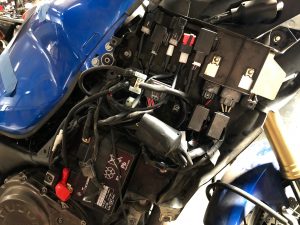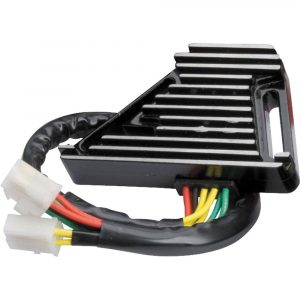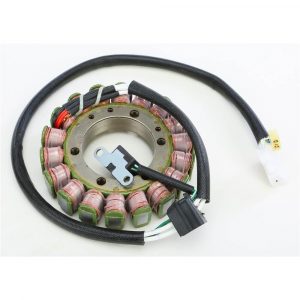How To Diagnose Motorcycle Electrical Problems
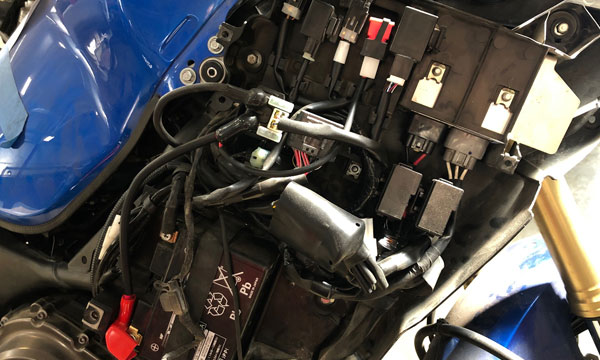
It happens at the most inopportune time: You go to start your motorcycle only to have it sputter out a protest before dying. Is it the motorcycle battery, or could it be the regulator? If you have a newer bike, you likely have more intricate wiring than you're used to on older motorcycle models. To help address your frustration and get you back on the open road with a fully functional bike, here are a few tips on diagnosing and solving motorcycle electrical issues.
Main Fuse
Your bike's entire electrical system relies on the main fuse. Even if your bike doesn't suddenly or completely die on you, issues with the main fuse can manifest in the form of a fickle connection that leads to poor bike performance. Factors that can negatively impact the performance of your bike's main fuse include excessive vibration and overall age. Do yourself a favor and buy a backup main fuse that you keep on you at all times while on your bike. A successive series of blown fuses could mean there's another undiagnosed issue with your bike that's causing excessive amperage.
Motorcycle Battery
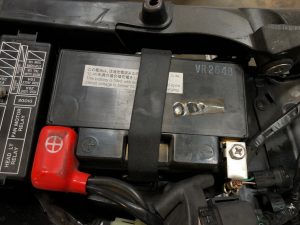
One of the first places to look after asking, "How can I best diagnose my problem" is to check your motorcycle battery. Specifically, first check that your bike's battery is fully charged, which means it has at least 12 volts when the lights and ignition are off. If you charge the battery but it doesn't even reach 11 volts after you test it again, it could be that one of the cells is on the fritz.
You can also check the battery with the ignition on. This is a good idea to better determine whether you can actually continue using the battery after it measures 12 volts with everything off. A motorcycle experiencing engine troubles can make it difficult for the starter to get the engine turned over. Take a look at the battery cables to better determine if this is what's going on with your battery and engine.
In regards to the charging system, it should bring the voltage to at least 14.2, but no more than 15 volts. If the voltage surpasses 15 volts shut the bike down to prevent damage. What if the voltage is less than 14.2? That means the charging station can't keep up with your bike's electrical demands.
Ground Wires
One of the most common electrical issues with motorcycles is poorly operating ground wires. Indications that your ground wires are starting to give out include electrical components flickering in and out and a bike that won't start. Learn where all the ground wires are on your bike so that you can check them yourself to determine whether they're all grounded. Use your service manual to help you track them all down. You'll be pleased to know that it doesn't cost very much at all to remedy faulty ground wires. Make them one of the first things you check when your motorcycle has electrical issues.
Rectifier/Regulator
The rectifier/regulator on your bike helps maintain the battery charge while also ensuring the battery isn't damaged by improper voltage. The rectifier converts the stator's AC output to DC so that it can be sent to the battery. The regulator prevents damage to the battery by managing the amount of DC output that gets sent to the battery and turns extra voltage into heat that's safely bled off.
To test your rectifier/regulator to determine if it's the root of your problem, disconnect the wires and switch the multimeter to the diode function. Touch the positive lead of the multimeter to the positive diode on the rectifier/regulator. Next, test all the stator inputs on rectifier/regulator with the negative multimeter lead. Ensure that the meter isn't reading while you test the positive diode, basically you should get no reaction on the multimeter. Next touch the negative multimeter lead to the positive rectifier/regulator diode then touch the stator inputs on rectifier/regulator with the negative multimeter lead. You should hear a tone or beep each time you touch the stator inputs on rectifier/regulator. For testing the negative diode, repeat the above process. If you're in need of a new rectifier/regulator Rick's Motorcycle Electrics has some options.
Stator
Any charging problems you're having with your bike could originate with the stator. This particular part ensures your battery maintains a charge by supplying it with extra power while the bike is operational. The battery's performance will dwindle if the stator can't provide sufficient power. To begin find where the start and rectifier/regulator plug into each other and unplug that connection.
Your multimeter should be on the ohms setting. Using the positive negative leads on the multimeter test the terminals on the stator by linking A to B, then B to C, and finally C to A. It should always register under 1 Ohm and all reading should be relatively close to each other when you check all three of your terminals. Any reading that exceeds 1.5 Ohms could indicate a faulty stator. Next, connect the stator and rectifier/regulator back together, switch your multimeter to AC reading, start the motorcycle, and then repeat the tests performed above. Each reading should produce about 16 volts. Next, increase the rpms to about 5,000 and conduct all the terminal tests again. While significantly higher the readings should all be relatively close to each other. If you determine that your stator is bad Rick's Motorsport Electrics offers OEM style regulators.
For more tips on electrical issues with a motorcycle, help is a phone call away. Contact us here at Chaparral Motorsports by calling 1-800-841-2960.

